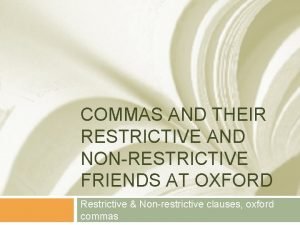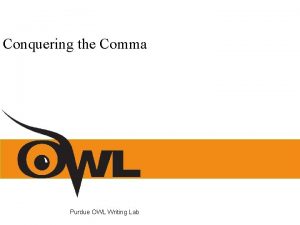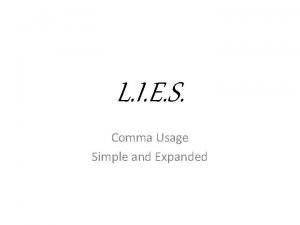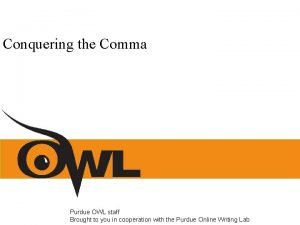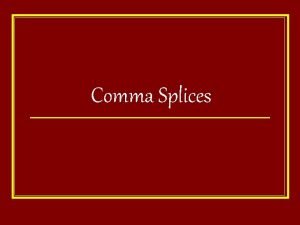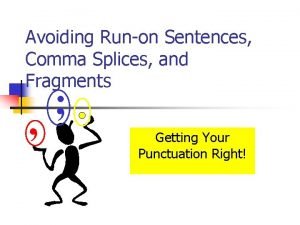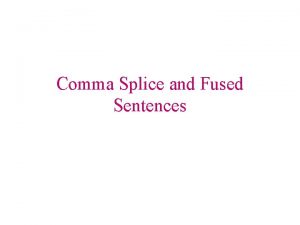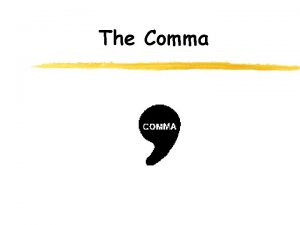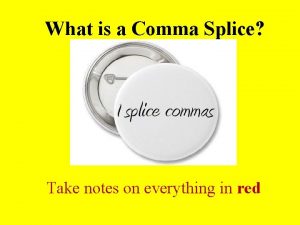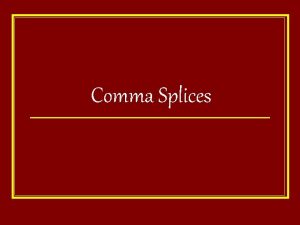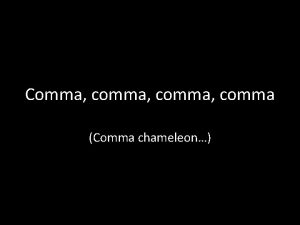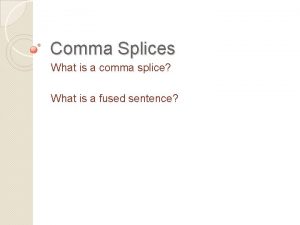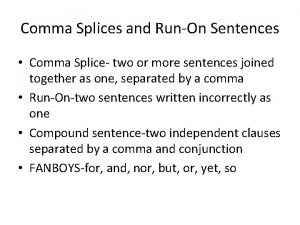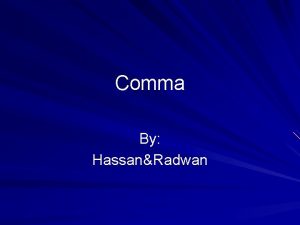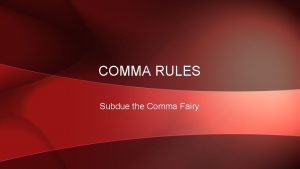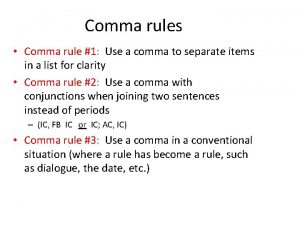Comma Splices Comma Splices Comma splices occur when











- Slides: 11

Comma Splices

Comma Splices Comma splices occur when two independent clauses (sentences) are cobbled together with a comma instead of the appropriate punctuation which would allow the sentences to stand on their own.

Comma Splices Example of a Comma Splice The cat walked across the fence, the dog barked at the cat. “The cat walked across the fence” is sentence one. “The dog barked at the cat” is sentence two.

Comma Splices To correct the comma splice in this sentence: The cat walked across the fence, the dog barked at the cat. create two sentences. The correction should look like this: The cat walked across the fence. The dog barked at the cat.

Comma Splices The sentence below is not a comma splice. When Lisa got home, she fixed dinner. The clause When Lisa got home is a dependent clause. If you read it by itself, you want to know more (What happened when Lisa got home? ). The dependent clause is tied to the independent clause (the primary sentence) she fixed dinner with a comma so that the readers will realize that the dependent clause is modifying (giving more information about) the independent clause.

Comma Splices Comma splices are grammar errors.

Comma Splices A comma splice is not an acceptable alternative to using periods, exclamation points, question marks, or semi-colons to punctuate a sentence.

Comma Splices and Run-On Sentences A comma splice is a form of run-on sentence in that it is a group of two or more sentences incorrectly cobbled or linked together into one gigantic, confusing sentence.

Comma Splices and Run-On Sentences Comma splices are different from other types of run-on sentences because they are tied together with commas instead of either lacking all punctuation or being linked with a number of conjunctions like ‘and’ or ‘but’.

Comma Splices Another Example Comma splices Incorrect: Although she hated the taste, she took her medicine, she couldn’t afford to get sick again. Correct: Although she hated the taste, she took her medicine. She couldn’t afford to get sick again. Correct Usage The first comma in this sentence is correct. It separates, but connects, the dependent clause (Although she hated the taste) to its independent clause (she took her medicine). However, the second comma should be a period (or at least a semi-colon) because “she couldn’t afford to get sick again” is a separate independent clause – a separate sentence.

Comma Splices *~*~*~Tip~*~*~* When in doubt about whether a sentence is a comma splice, read the portion of the sentence to be set off with the comma aloud. If it can stand alone as a coherent sentence (instead of a fragment), create a new sentence, punctuated with a period, exclamation point, or question mark instead of a comma.
 Comma comma comma chameleon meme
Comma comma comma chameleon meme Purdue owl comma rules
Purdue owl comma rules Comma splice example
Comma splice example Owl commas
Owl commas Meccanismo a camma
Meccanismo a camma Comma splices purdue owl
Comma splices purdue owl When does a comma splice occur
When does a comma splice occur Run ons and comma splices
Run ons and comma splices Fused sentences
Fused sentences Comma splices and fused sentences exercise 1 answers
Comma splices and fused sentences exercise 1 answers Run on sentences examples
Run on sentences examples Flying splices on the supercalender
Flying splices on the supercalender
